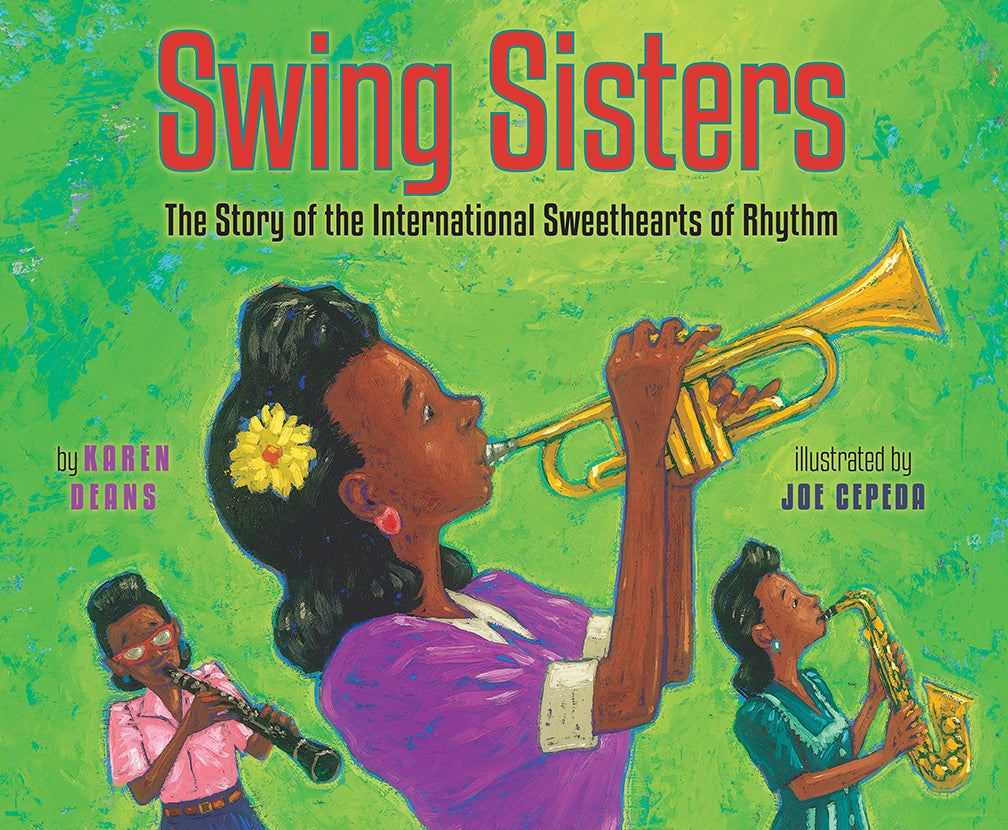
Walk into any public library (or your own) and chances are you’ll find a classic illustrated by artist Joe Cepeda. A few titles that spring to mind include Nappy Hair (Knopf) by Carolivia Herron, and Penny Butter Fudge (Simon & Schuster) by Toni Morrison and Slade Morrison. Cepeda recently collaborated with Karen Deans for Swing Sisters (Holiday House, $16.95; ages 4-8), a new book that celebrates the real-life story of the International Sweethearts of Rhythm. As the first integrated all-women swing band in history, the International Sweethearts of Rhythm traveled around the world during the World War II era, bringing music and joy at home and abroad. ESSENCE recently caught up with Cepeda to discuss his latest book.
ESSENCE: What drew you to the story of Swing Sisters: The Story of the International Sweethearts of Rhythm?
Joe Cepeda: The subject matter was truly compelling. It’s difficult not to be inspired by what these young women were able to do. I wanted to illustrate this story at first read. Everyone has a capacity to make something beautiful, as exemplified by The Sweethearts’ terrific sound, but, to persevere and thrive with so much adversity to contend with, who wouldn’t want to help tell that story?
What were some of your goals in illustrating the story?
My goal is to make something beautiful, too. It’s not my intention to simply echo the author’s words. The hope is to find the pictures between the words, or, those images that harmoniously parallel the story, both in narrative and emotion. This requires a great deal of invention from an illustrator. This process of visual direction and discovery, in collaboration with the text – when done well – can make for a really good book.
What will young readers discover about the International Sweethearts of Rhythm?
I think readers will find another marvelous American story where exuberance, hard work, camaraderie, and optimism fuel the driving determination of some very talented young women. I think a reader will also be reminded how art is a bond that all people experience and, perhaps more significantly, need. Just beyond air and water, there is the human desire for love and beauty, as well as a beat to dance to and sights to see.
Why is it important for children of all colors to see themselves in young people’s literature?
Until Jesse Owens proved it front of an incredulous crowd, or Cesar Chavez and Dolores Huerta brought the powers that be to their knees, it needed to be seen to be believed. Everyone benefits from children believing they can do great things… or do the simplest things… or fail… or surpass. Not having that, in the greater scheme of things, keeps all of us at a disadvantage.
How did you get started in children’s books and whom have you collaborated with?
After a scenic route through college, I eventually got a degree in Illustration. Soon after graduation, I took my portfolio to New York. I showed my work to magazines and book publishers alike. I was fortunate enough to be offered a book deal from my first meeting with an editor. I have been lucky in this regard, as well, illustrating manuscripts written by Arnold Adoff, Gary Soto, Julius Lester, Pam Muñoz-Ryan, and Toni Morrison, to name a few.
What’s your next project?
There’s always something to do. At the moment, I’m finishing some illustrations for the National Park Service. There are stories on my desk that I’m writing, too… I’m always trying to get to those.
